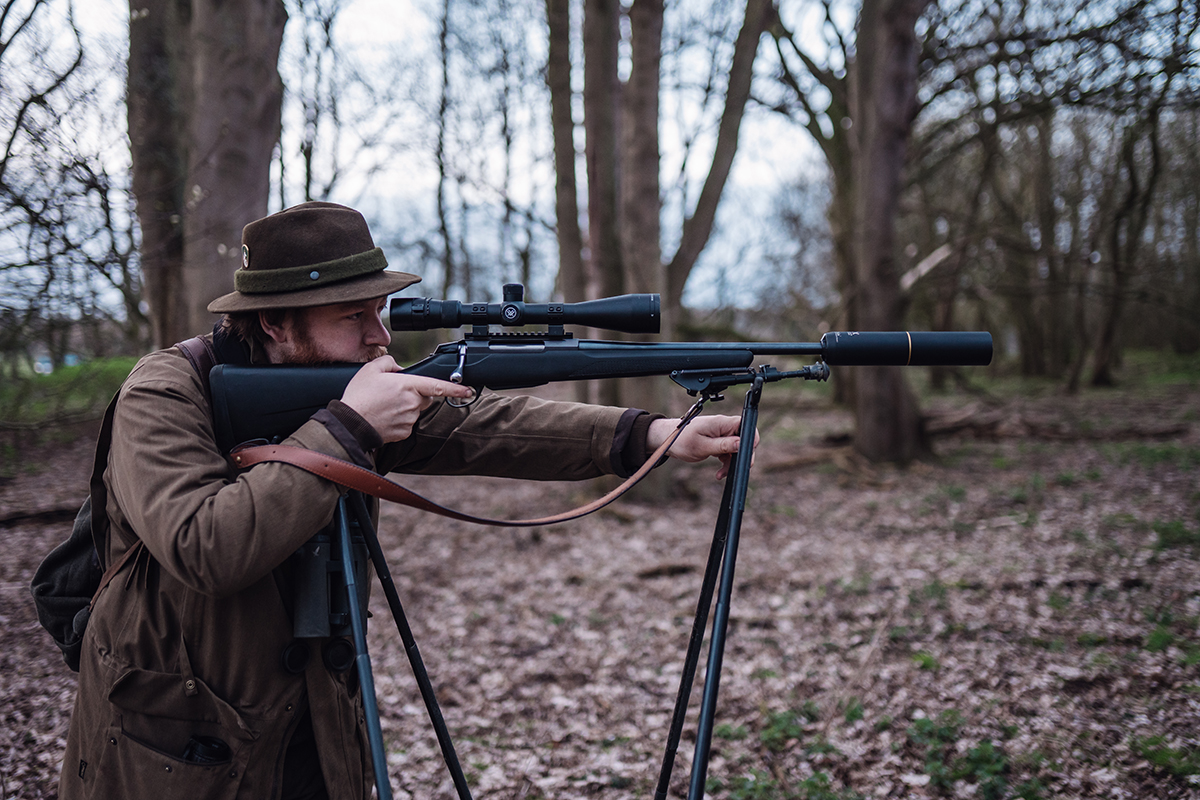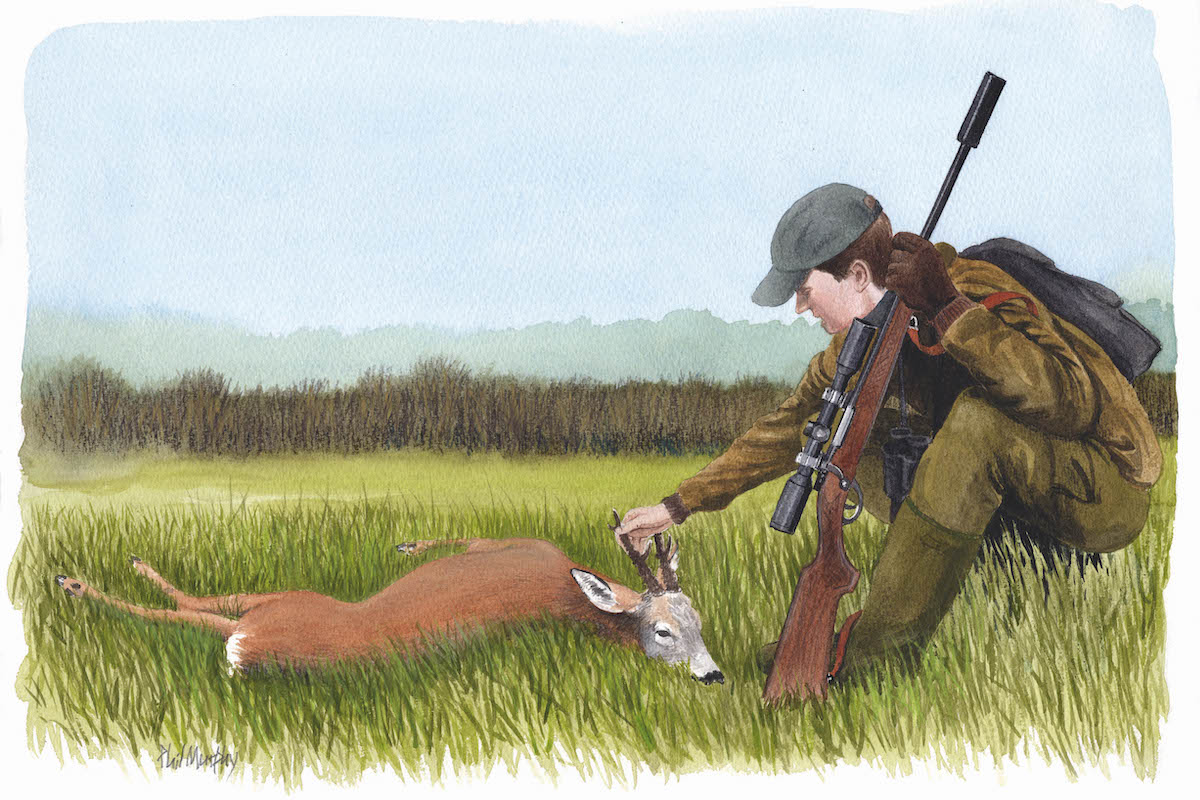Muntjac stalking – why now is the ideal time to do it
Now is the ideal time to stalk our smallest deer species — it may be diminutive, but in ever-growing numbers muntjac can do a considerable amount of damage

As dawn breaks, a lapwing starts its undulating courtship call, trying to summon a mate across the Breckland soil. The tops of the trees rustle violently. The wind chills me to the bone; the warmth of my bed is but a distant memory. I am here to do a job; protect the emerging flora in our woodlands by culling muntjac. Given the weather, I am not hopeful.
The end of March can deceive the optimist. It offers the most delightful of days as hawthorn leaves unfurl in the brightest green, blackthorn hedges burst into clouds of downy blossom and brimstone butterflies flutter around bramble patches, flaunting themselves in the first rays of warmth. Then a north wind blows, the hailstones clatter and February fill-dyke returns for an unexpected and unwelcome visit.
Named after the Roman god of war, Mars, March was when the Roman army would restart its military campaigns after a winter break. For the lowland deer manager, it is perhaps the most crucial month to have boots on the ground, especially when it comes to controlling muntjac.
These small deer are the most fair-weather of all the six species that live wild in Britain. A wet and blustery day will restrict their movement, as they couch up as close as possible to a food source. On a warm and still evening, though, they will wander around their patch, contentedly browsing. A month of contrasts, during March you need to be flexible and make the most of kind conditions.
This time of year is critical for managing the deer population because, given reasonable weather, it is when the odds are most in the stalker’s favour. With the first flush of spring a muntjac’s menu expands rapidly. New growth, whether it’s wildflowers or woodland regeneration, is their favourite thing to eat and it is now emerging everywhere they look.
After the winter months, when fresh food was hard to come by, this feast lengthens feeding hours and increases deer activity. They need to make the most of the banquet. Come mid-April, the undergrowth will be a mass of foliage, shielding the little deer from the stalker’s gaze. March combines elevated deer movement with a landscape that is still bare enough to spot and stalk them.

With only a few seconds to reposition, Sam lines up on a muntjac
Connected habitat
This year my cull sheet has fewer entries than usual. The birth of my first child has meant I’ve frequently seen dawn arrive, but not often with a rifle in hand. I need to make this session count. I’m on a part of the farm that has three small copses in a row, with a meadow in between them. It is an ideal piece of connected habitat, with each of the small woods at different stages of maturity. All deer, but especially muntjac, love it. And in a few short weeks the grassy meadows will become too tall to stalk them.
I creep up to a small grove of yew trees. These native conifers are nature’s umbrella and in inclement weather deer are often found sheltering under their canopy. On my way I bump a muntjac from the depths of a bramble patch. It was buried so deep within that not even my thermal imager picked up a hint of heat. It runs off, its white tail standing proud in defiance.

A thermal imager is an essential piece of kit, not least because the deer can be screened by vegetation
There is nothing under the yew. I set my rifle on the sticks and scan the landscape. No deer to be seen. I reach into my backpack and pour some coffee from a thermos. The comfort of caffeine is yet to take hold when a dark shape starts to shuffle across the meadow, slightly hunched and occasionally pausing for a furtive glance at its surroundings.
I swivel my sticks and rest the crosshairs over its front shoulder. It has stopped just behind a tuft of grass and is obscured. It takes a few bounds further forward and I need to reposition. It is now a game of catch-up: can I aim quickly enough to take advantage of one of these brief stops?
I’m close when it sets off again. I bark loudly, doing my best to imitate one of its own kind. The deer freezes, perfectly broadside, and stares in my direction, allowing me those vital moments to squeeze the trigger.
The environmental impact of muntjac is well documented. They are eminently adaptable and their population has rocketed over the past 30 years. In the early 1990s they made a very occasional appearance on our Suffolk farm. Now, on two bits of ground I stalk over, we cull 120 a year, which seems to be a holding pattern rather than making any real dent in their numbers.

It’s worth keeping an eye on the ground as you stalk, because slots can tell you a great deal
In that time, our floral diversity has decreased, coppice regeneration has slowed, resident woodcock have vanished and we have fewer nightingales each year. Not all this can be laid at the feet of our smallest deer, but they contribute and, if left entirely unchecked, can be a central factor. It is not a battle we are bound to lose, though. Where we have made concerted efforts, especially at the right time of year when young regrowth is at its most vulnerable, our regeneration has been successful. By midsummer, the growth is usually substantial enough to survive.
Of course, the by-product of controlling muntjac is some of the finest meat you can eat. I once cooked the fillet of all six British deer species side by side as a taste test, and the little invader came out on top. It makes a stellar and more seasonal alternative to lamb on your dining table.
Shelter
After collecting the deer, I continue my stalk, moving through the first meadow and into the next little copse. A roebuck moves to my right, an old boy with strong antlers already out of velvet; one to remember for the new season. The wind is still strong and droplets of rain start to patter against my jacket. This copse has a small pit that provides a little shelter, and is where a deer will most likely be.
When March is in one of its mood swings, trying to drag us back into winter, knowing your land and where the deer will be is crucial. On the far bank of the pit, through a carpet
of dog’s mercury, there is a clear track — a muntjac highway. Concealed behind a flowering gorse bush, I set up in anticipation.
Despite the drizzle, it is not long until a deer appears; a young buck being pursued by an old one, defending its territory. The young pretender pauses for an instant and looks back, perhaps surveying the medal-class headgear of its opponent, considering its chances in a confrontation. It hesitates for a moment too long and the bullet finds its mark. In shock, the older buck bounds off into the distance, barking as it goes.
Despite the vicissitudes of March, it has been a successful morning. If we’re to win the battle for our woodland flora and fauna, it’s critical that stalkers make the most of this time of year, whatever the weather.
Vital kit for culling muntjac

In our part of Suffolk, controlling muntjac is a less-selective type of stalking than managing roe. Although the munty is a challenging and sporting quarry, being equipped properly makes all the difference to achieving your cull target. My essential items are:
- A thermal imager: some still think of this as unsporting but it is a complete game-changer when it comes to seeing muntjac in the woods, as they are often screened behind some cover. A small heat signature gives you the cue to set up and await their next move. I use the Pulsar Helion XP38.
- A quiet rifle: I like using a .22-250. Well moderated, it is considerably quieter than a larger calibre and doesn’t disturb other deer nearby. My Tikka T3 Lite is perfect for the job. A 55-gr bullet, such as the Winchester V-Max, is flat shooting and the ideal size for these miniature deer.
- Quad sticks: perhaps the best innovation in lowland stalking in the past 15 years. Quad sticks, such as Viper-Flex Styx Elite, extend your range and accuracy dramatically. The diminutive stature and often hunched posture of muntjac mean that without pinpoint accuracy there is a high risk of a shot perforating the gut.








